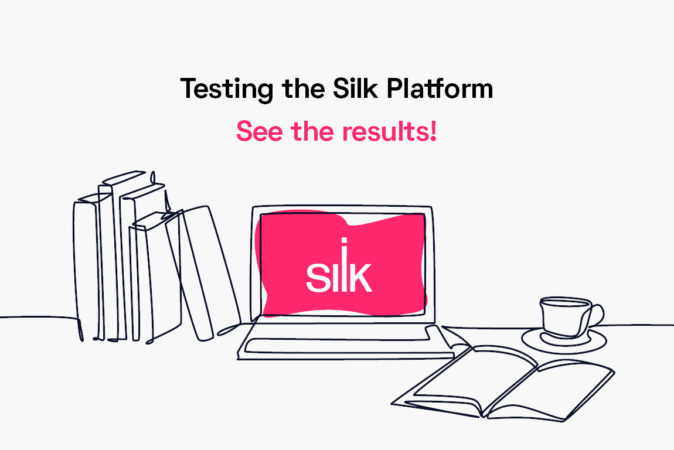This blog will talk about cloud performance testing, specifically:
- What is cloud performance testing
- The benefits of cloud performance testing
- Types of performance tests on the cloud
- Tools for cloud performance testing
- Developing a strategy for cloud performance testing
What is cloud performance testing
Performance testing is one aspect of software quality assurance and is used to measure how responsive and stable a software application is under different workloads. Cloud performance testing, in particular, refers to the performance testing of software applications running in the cloud.
While the cloud offers a pool of resources for computing, storage, and networking where applications can be scaled, the provisioning of additional cloud resources will not automatically make your application fast. The application, its architecture, and its data-intensive workloads will impact performance. If you are moving an application from on-premises to the cloud, you should compare performance benchmarks across the environments to ensure SLAs and user experience are met. If you are testing a cloud native application, you can move ahead with standard performance testing ahead of production.
Cloud performance testing determines how well the application will function or is functioning in a cloud hosted environment so you can mitigate performance bottlenecks and determine what is needed to handle peak workloads. The goal is to simulate real-world users interacting with the application to measure, validate, and verify its responsiveness, speed, scalability, and stability because performance equals transaction time and user experience.
Measuring performance is critical to the success of a cloud computing initiative because performance has a direct impact on the cost of cloud services, as well as the application’s reliability and scalability.
The types of performance tests on the cloud
Load testing and stress testing are two common performance tests to measure the latency, throughput, and capacity of the system. Load testing looks at how the application performs under expected normal loads, and stress testing looks at how the application performs under heavier than average loads.
Here is a list of different performance tests for applications on the cloud:
- Load test – measures the performance of the application under normal and peak conditions
- Stress test – measures the performance of the application under extreme conditions outside of the bounds of normal operation
- Browser test – validates that the application works as intended when accessed through different web browsers
- Latency test – measures the amount of time it takes to move a data packet from one point to another within the network
- Targeted infrastructure test – isolates and measures each layer and/or component of the application to test its performance
- Failover test – validates the application’s ability to provide extra resources and move to a back-up system in the event of server or system failure
- Capacity test – measures how many users the application can handle before performance suffers
- Soak test – measures the performance of the application under a high load for an extended period of time
Many performance testing tools are now available as cloud-based tools, which is good for performance testing, and provides the ability to simulate load tests constituting millions of concurrent users coming from multiple geographic locations.
Tools for cloud performance testing
There are various proprietary and open source tools for cloud performance testing, including:
- Apache JMeter
- AppPerfect
- BlazeMeter
- Blitz
- CloudBees
- Fortio
- Gatling
- HammerDB
- IBM Rational Performance Tester
- IOmeter
- LoadStorm
- LoadNinja
- LoadView
- Micro Focus LoadRunner
- Micro Focus Silk Performer
- Nessus
- Oracle VDbench
- Perfecto
- SmartMeter
- SOASTA Cloud Test
- Spring Cloud Sleuth
- StormForge
- StressStimulus
- Testsigma
- Tricentis NeoLoad
- VMWare HCIBench
- Watir
- WebLOAD
- Xamarin Test Cloud
- And more
Developing a strategy to test application performance on the cloud
Developing a strategy for application performance testing follows this sequence:
- Define the scope and criteria
- Test plan and design
- Configure the test environment
- Test execution
- Monitor, analyze, and fine tune
Define the scope and criteria
During this stage you will collect requirements and set goals and objectives for performance testing. Identify the desired performance characteristics of the application including response time, throughput, and resource utilization. Identify the software, hardware, and network configurations for testing. Compare the test and production environment to mitigate any deltas that can impact the results of testing.
Test plan and design
At this stage, you are developing the performance tests, which involves identifying usage scenarios, determining the variability across users, identifying and generating test data, and specifying metrics to collect. This information will feed into workload profiles.
Configure the test environment
Prepare the performance testing tools and designed tests ahead of test execution. Configure the test environment and resource monitoring tools.
Test Execution
Perform the performance tests and collect and analyze the data.
Monitor, Analyze, and Fine Tune
Consolidate, analyze, and share the findings with your team. Based on the results, continue to fine tune the test plan and work on the application and its infrastructure as needed.
Pro tip: As DZone notes in Building a Cloud Performance Testing Strategy, the response time in a cloud environment can differ from the time taken in a non-cloud environment. In a public cloud environment, other applications are sharing the cloud with you, which can cause latency fluctuations. Check out our eBook: How to Accelerate Cloud Performance.
How is cloud performance measured?
There are a number of metrics that can be used to assess cloud performance. The most widely used benchmark for cloud performance is Input/Output Operations per Second (IOPS). IOPS measures the read and write speeds that are being achieved in the cloud. IOPS can be affected by a number of things including block sizes and whether the data is random or sequential.
In the cloud, the way you manage your data — whether it’s by running VMs and attaching block volumes to them or using managed services — can also have an impact on our cloud performance.
Benefits of cloud performance testing
The benefits of cloud performance testing include validation that the application is running as intended in a cloud environment and providing an optimal user experience. Knowing that your application performs well, you can focus on scalability, flexibility, and reduced overhead for innovation.
Performance issues that arise in the cloud tend to be lurking in the application or the database. By running performance tests on the application, you can identify bugs or performance bottlenecks to mitigate in the source code. When it comes to the database, you can look at the configuration of cache size, bucket size, and I/O optimization. You may also need to increase the resources that the database needs, such as CPU and storage. Performance testing helps to isolate and remedy what needs to be modified for the cloud computing environment.
How to improve cloud performance with Silk
At Silk, we help enterprise customers supercharge their databases in the cloud. The Silk Cloud Data Virtualization Platform is a virtualized layer that sits between your application stack and cloud infrastructure to optimize your data workloads and provide 10x the performance of cloud native alone. Silk is particularly useful for Tier 1 mission-critical applications that require a lot of performance and would be very expensive to provision in the cloud. Oftentimes, the cost to provision cloud resources to meet mission-critical performance levels makes the move to cloud computing a non-starter. Silk solves this problem.
Looking to improve cloud performance?
Get the roadmap you need. Download our ebook today to start taking steps to accelerate cloud performance.
Read Now



